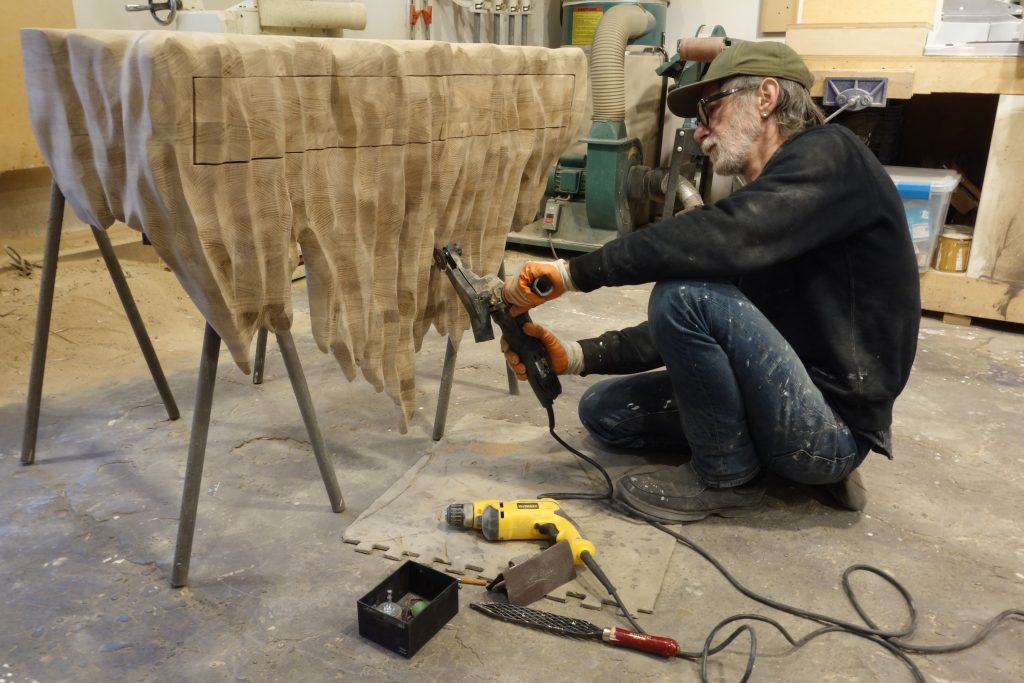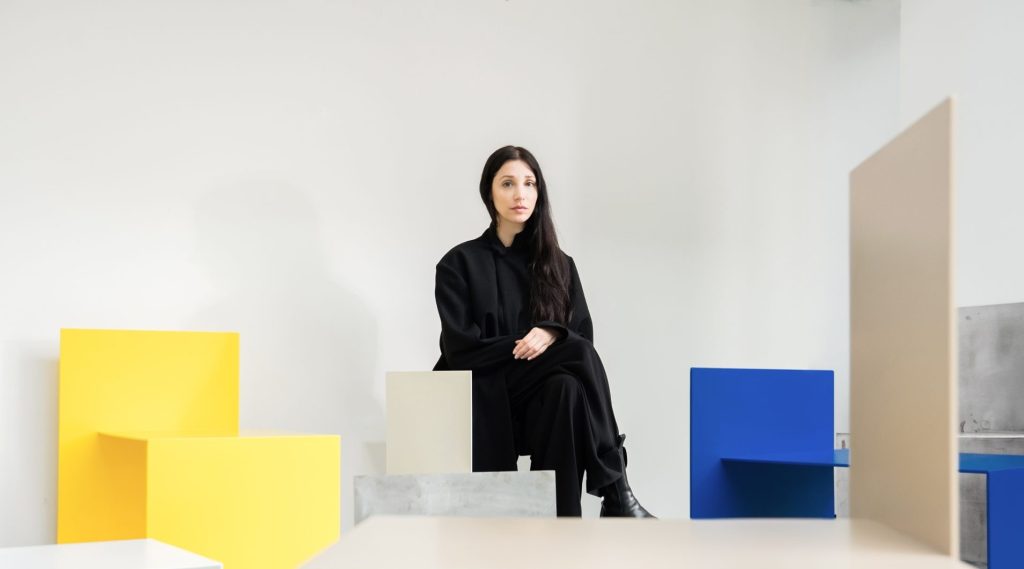
UAU: An Intuitive Approach to Ceramic Design
“…throughout my creations I want them to set a mood, to convey a feeling. I don’t want you to pass by that object daily and just say, ‘Ah yes, that’s just my lamp’. I want it to make you feel something and hopefully acknowledge its presence.”
– Vanessa Singenzia of UAU
View the UAU showroom, including “The Jetsons” Lamp
Ceramic design studio UAU follows an intuitive approach to ceramics, allowing the hand of the maker to be present in each piece. The Romanian studio was founded by ceramics artist Vanessa Singenzia, whose exploration of the versatility of ceramic materials has led to a distinctive design identity. Her pieces are full of colour and tactility, and her process underlines the attentive craftsmanship that she employs and the ways in which the sculptural and conceptual can meet the functional. The realm of ceramic design offers a hands-on experience between maker and material, with instinctive forms, patterns, and textures evolving from dedicated practice. Through UAU’s design philosophy, Singenzia is able to communicate sculptural gestures and abstract ideas in a product context using bold colours and simple shapes.
As mentioned by Singenzia below, there is an ephemeral quality that emerges from the way in which pieces come together and exist in her practice. One of UAU’s most recent pieces, the “Chanka-Hanka” Mobile Chandelier, visualises this intuitive process. Led by the interaction between each ceramic component, the unique light object was constructed piece by piece until a balanced form was reached. It is through this balancing act that the object grows until it finds its playful final form. Other pieces explore the conceptual, as in “SYNKRO”, which considers the effect objects have on our physical and mental environments. Featuring glowing neon elements supported by ceramic bodies, the two complementary light objects represent masculine and feminine energies and reflect the human desire for communication. As a studio, UAU’s practice is full of individuality, offering familiar, yet out of the ordinary objects and encouraging us to consider the connection between ourselves and the objects around us.
What inspired or drew you to explore ceramics as a medium?
To me, ceramics came as a more organic alternative of expression to the technical environment in which I was initially formed. I remember that at first, it was more out of an intuitive impulse. I knew nothing about that field when I started and, at the beginning, it was just an exploratory state of mind which remained with me throughout my artistic development.
Why ceramics? Because it seems to me that this field allows you to do pretty much anything. Whilst working with clay, which is a very versatile material, you have a lot of freedom in terms of what you can do. You can easily make a 2D drawing into a 3D ceramic object, and that is one of the things that initially sparked my interest. It is so marvellous to be able to have an idea, sketch it out, and later have the actual object in your home, whether it is a functional one or something purely decorative.
I studied architecture before and one thing that would frustrate me was that to see an actual result of your work, it would take a huge amount of time. With our fast-paced era, I think we too feel the need to have something be done as fast as possible, and it seems to me that ceramics allows you to do just that. By simply bringing water and soil material together, you can make something pretty amazing.
As part of the “Time for Change” collection at Virtual Design Destination 2020, how does your practice reflect and/or diverge from the contemporary Romanian design scene?
I work somewhere in-between art, design, and craftsmanship, my work includes home products, decorative art, and sculptures, and I don’t necessarily consider myself a designer nor an artist, but more likely a craftsman. I know that my work has some kind of weirdness to it, I do it on purpose, I look for that weird side and, on top of that, I look for something that grabs attention.
To me, the impression people take with them in regard to my work is really important because it fuels along my imagination. The fact that everybody will understand something different makes this creative process so beautiful and personal in the same time. That’s why I try to reflect a part of my own being in everything I do. Bright, bold, and colorful with a tint of playfulness is what I actually am. More than anything, throughout my creations I want them to set a mood, to convey a feeling. I don’t want you to pass by that object daily and just say, “Ah yes, that’s just my lamp”. I want it to make you feel something and hopefully acknowledge its presence.
As for the Romanian design scene, it is still an ongoing process and I won’t go any deeper into the subject because I feel it is not up to me to set any opinions regarding it. But, one thing I know for sure is the fact that we still have to learn and grow at the same time. So for me, “Time for Change” will transform into, “time to learn and acknowledge everything much deeper”.
L-R: “Blue-Cheeked Bee Eater” Carafe & “Kingfisher” Carafe – 180€ & 150,40€ ex. VAT
Pieces like “Fingerprint” and “Chanka-Hanka” Mobile Chandelier emphasise your intuitive approach to ceramic design. What do you think the greatest outcome of this approach is?
This intimate and intuitive approach does not only reflect in [the] “Fingerprint” Vases [and the “Chanka-Hanka” Mobile Chandelier], but rather goes throughout my whole practice and my way of being. I’m not forcing any object into its final form, but rather allowing space for intuitive decisions during the process of making. This way it almost becomes ephemeral and each object will automatically become personal to its user as well. It can influence the physical and emotional condition around it and through this ability it can induce a diversity of human emotions.


Left: “Chanka-Hanka” Mobile Chandelier – 2.000€ ex. VAT
What is the greatest challenge?
Probably making people understand that they don’t actually need a so to say “trendy” object that everybody has, but rather something personal, that reflects their individual needs…


As a designer and artist, how do you create a balance between expressive aesthetics and functionality in your pieces?
Functionality kinda comes in the background regarding my work and it is not because I don’t want to offer the experience to my users, but, for me, functionality is not only ergonomics or rationality, but something that exceeds their limits. The fact that an object can influence the physical and emotional condition of the people around it, creates a lexicon of sensory concerns as well as a diversity of human emotions that it can convey.
My work is more likely a sculptural gesture presented in a product context, a conceptual statement in which a functional object can communicate an abstract idea presented through bold colors and simple shapes.


Bio
UAU is the result of approaching ceramics in an intuitive way, in which one wishes to expore different ceramic materials by analysing the concept of existence, where functionality is not only ergonomics or rationality, but someting that goes beyond their limits.
UAU is a sculptural gesture presented in a product context, a conceptual statement in which a functional object can communicate an abstract idea presented in bold colours and simple shapes.

















Responses